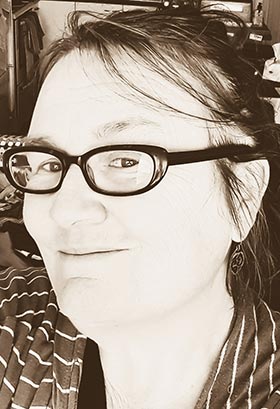
I am currently in the midst of PhD study, and recently completed a literature review that included examining the New Zealand nursing workforce, with a particular focus on Māori. With this in mind, I wish I could say that the future will be all “rainbows and unicorns”. But, unfortunately, the reality is quite the opposite.
Before anyone had heard of COVID-19, New Zealand was already hurtling towards a potential nursing workforce crisis. An ageing workforce, combined with increasing demand for health care from an ageing population, has set the scene for a collision predicted anytime now with pretty serious consequences. The projected workforce shortfall was thought to be as much as 15,000 nurses.1, 2
In recent times, employers have been increasingly filling vacancies with internationally qualified nurses, who now represent 27 per cent of the total New Zealand nursing workforce.3 However, there is no way of knowing now how the projected shortfall will stand when taking into consideration a global pandemic.
The pending nurse shortage is not an issue for New Zealand alone – it is set to be an international issue,3 and will undoubtedly have repercussions for recruitment here. But considering the current COVID-19 climate, having maintained a relatively low mortality rate in comparison to other countries around the world, perhaps we should ask: Just because we can lure international nurses to New Zealand, should we? Moreover, is it ethical to be enticing nurses here from countries that possibly need them more than we do?
With these uncertainties, how will the future look? What are the implications for nursing care? We need only to look back to the 1990s to get a view of the possible fallout. During that time, New Zealand underwent considerable economic and social reform, successive governments’ austerity measures forcing the health system through various changes, including a mass reduction in the number of nursing full-time equivalents across the country. This had a significant impact on patient care and resulted in increased adverse outcomes potentially sensitive to nursing (OPSN), such as decubitus ulcers, deep vein thrombosis, pneumonia, urinary tract infections and other health issues.4 During this time, Māori experienced higher rates of medical OPSNs and a shorter average length of hospital stay than non-Māori.5, 6 Although today’s looming crisis is due to different circumstances from those experienced in the 1990s, the outcomes are potentially the same.
Māori continue to experience considerable barriers to equitable health care in Aotearoa;7 there is no doubt that a nursing shortage will further increase the disparity and inequity.
Also, Māori nursing represents only seven per cent of the total nursing workforce, and we potentially will be seeing nearly a third of our Māori nursing colleagues heading into retirement over the next five to 10 years.2 This will have huge repercussions for Māori nursing leadership and Māori health, putting incredible pressure on Māori services and communities.
In anticipation of a critical global nursing shortage, the World Health Organization has recommended countries place more emphasis on growing their own local nursing workforces.3 With an overhaul of Aotearoa’s health sector underway and recent tertiary sector changes that may affect nursing programmes, if there was ever a time to consider how we might grow our nursing workforce and prevent a health workforce crisis, then that time is now.
If we are to increase nurse numbers, then nursing leaders – who must include Māori – must collaborate with the Ministry of Health, district health boards, Māori providers, other employers and the tertiary sector on a strategy to secure the health workforce needs of our country into the future. Because right now, the future of nursing in Aotearoa is not looking too good.
Pipi Barton (Ngāti Hikairo ki Kāwhia) RN, MPhil(nursing), is a nurse lecturer at NorthTec and PhD student at Auckland University of Technology.
References
- Nana, G., Stokes, F., Malano, W., & Dixon, H. (2013). New Zealand Nurses: Workforce Planning 2010-2035.
- Nursing Council of New Zealand. (2019). The New Zealand Nursing Workforce: A profile of Nurse Practitioners, Registered Nurses and Enrolled Nurses 2018-2019.
- World Health Organization. (2020). State of the world’s nursing 2020: Investing in education, jobs and leadership.
- McCloskey, B., & Diers, D. (2005). Effects of New Zealand’s Health Reengineering on Nursing and Patient Outcomes. Medical Care, 43(11).
- Wilson, D., & Barton, P. (2012). Indigenous hospital experiences: a New Zealand case study. Journal of Clinical Nursing, 21(15-16), 2316-2326. doi:10.1111/j.1365-2702.2011.04042.
- Wilson, D., Diers, D., Carryer, J., Spicer, J., McCloskey, B., Budge, C., & Barton, P. (2010). Nursing and Māori patient outcomes: An analysis of outcomes potentially sensitive to nursing. AUT/Massey University/Yale University: New Zealand/USA.
- Barton, P. (2018). The elephant in the room – nursing and Māori health disparities. Kai Tiaki Nursing New Zealand, 24(4), 17-19.


